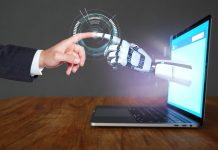Even at the best of times, Human Resources (HR) managers have a difficult job on their hands. In 2019, before the onset of COVID-19, more than 50% of HR leaders were already struggling to ensure that their workers were equipped with the skills to manoeuvre an increasingly digitized workplace. At the time, this so called ‘future of work’ seemed like something of a distant dream, leaving companies with the impression that they had months – even years – to prepare for the new digital landscape.
But now, COVID-19 has radically changed the playing field. With furloughs, reductions to workforces, and the trials and tribulations of working from home all to contend with, navigating the workplace in 2020 is no simple task. Whether it is Zooming clients, organizing remote gatherings, or communicating with staff exclusively via online channels, the pandemic has forced businesses to embrace digital platforms, or else be faced with the prospect of shuttering their operations. And as staff shun the office in favour of remote working, more so than ever before, tech has become a vital proponent of business, even for the most hesitant to adapt their strategies.
On the whole, the shift to remote working has been a success, with both business leaders and employees welcoming the changes. So much so, that the possibility of continuing with these practices even long after the pandemic has ended is now becoming increasingly likely. With many finding that they are able to better manage their work-life balance, or improve their productivity levels when working from home, the notion of adopting a blended model of remote and office working in the future has been a popular topic amongst business leaders. But even with all this in mind, one stark issue remains.
A complication that has come with the mass working from home experiment has been the issue of employee planning, management, performance and training strategies. This has been a worldwide concern, and a recent study by McKinsey has shown that workplace learning has emerged as one of the earliest and hardest-hit business activities, with roughly one-half of in-person programs cancelled or postponed in North America. Troublingly, in parts of Asia and Europe, the figure is closer to 100%.
It seems that understandably, business leaders might have pushed this to one side at the start of the pandemic, when workers were sent away to work from their homes for an indefinite period, in the hopes that things would soon return to ‘normal’. However, with no vaccine yet available and restrictions set to spill over into the new year, HR managers must now have plans in place to ensure their staff are well-situated to progress in their roles, even as the pandemic persists.
So, how can leaders adapt their HR strategies to fit the ‘new normal’, and better support their staff along the way?
Embracing digital solutions for enhanced L&D
It goes without saying that organizations have been quick to operationalize digital solutions to enable their workforce to do their jobs from home. Now, the natural progression from this should be to start adopting tech for their HR strategies, too. And while the coronavirus pandemic might have brought progress in these areas to a screeching halt, now that businesses have settled into new remote practices, leaders can afford to turn their attentions back to how they can invest in tech in other areas of their organization.
Encouragingly, recent research by Fountech.ai has found that most businesses are becoming keener to harness new technology. A significant 54% of the businesses surveyed stated that their organization has become more open to implementing tech to bolster their operations since the onset of the pandemic. Meanwhile, 45% state that their organization is planning to implement one or more technologies that utilize artificial intelligence (AI) within the next 12 months.
Clearly, companies are ramping up their investment efforts to support their newly digitized workforces. And as they do, I would advise HR leaders to prioritize technologies that contribute to a people-first digital transformation strategy. Following on from the trends towards videoconferencing and online communication platforms, connectivity and collaboration are likely to remain key focuses in the months and years to come.
As a result, managers should build on progress in these areas and re-consider how well their current software fits their organization’s needs. They should question whether their existing platforms are user-friendly, and whether employees have run into any issues, while considering any potential improvements that can be made. In some cases, this will naturally mean that businesses would be better off switching to new solutions.
Utilizing intelligent data analytics to assess employee performance should be a key area for HR managers to explore when looking to redouble their efforts on staff development initiatives. These tools can be a huge advantage to businesses looking to really personalize their learning and development (L&D) efforts to the individual employee, and gain granular insights into particular strengths and areas for potential improvement.
While the perception around these analytics is often that the process of acquiring them can be obtrusive or indiscreet, this shouldn’t be the case. These insights can be obtained in a non-invasive manner through virtual questionnaires, online projects and courses, and even Zoom catch-ups, all which make it easy to assess how staff are coping with any changes to their day-to-day, and provide new opportunities to upskill.
Making soft skills a prime focus
As new technologies begin to seep into the working world, naturally this will prompt a shift in the skills that businesses require from their teams. In the past, hard technical skills were the order of the day, but as technology has developed at pace over the past few years, increasingly machines will be utilized to complete more repetitive, resource-intensive tasks. As a result, this will mark an increase in the demand for soft skills such as communication, leadership skills, and even general attitude – essentially, qualities that no machine can master yet.
To meet this skills gap, L&D practitioners must go back to the drawing board. A good first step is to start with a training needs assessment to ascertain an employee’s goals. Are they struggling with stakeholder management and communication? Would they like to develop their leadership skills?
The next step would be to invest in training programs that focus on team-building, engage creative thinking and encourage active listening. These are often most successful when delivered by leaders who have these skills in droves, but in the future, might take the form of virtual reality (VR) training sessions, or higher-end moderated virtual classrooms, building on the evolution of remote technology.
Ultimately, as HR managers explore the long-term implications of an increasingly digital environment for workplace L&D, it might be worth considering novel technology solutions that reduce the need for face-to-face interaction. In this way, leaders will be able to support their new cohort of home workers more effectively, and boost their productivity in the new digital era.
About the Author
 Nikolas Kairinos is the chief executive officer and founder of Soffos, the world’s first AI-powered KnowledgeBot. He also founded Fountech.ai, a company which is driving innovation in the AI sector and helping consumers, businesses and governments understand how this technology is making the world a better place.
Nikolas Kairinos is the chief executive officer and founder of Soffos, the world’s first AI-powered KnowledgeBot. He also founded Fountech.ai, a company which is driving innovation in the AI sector and helping consumers, businesses and governments understand how this technology is making the world a better place.



































